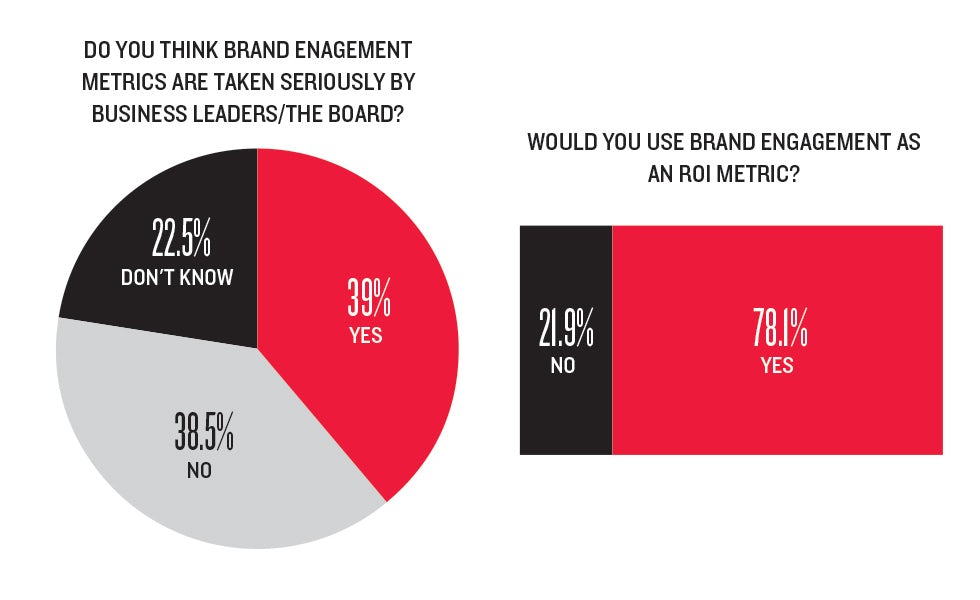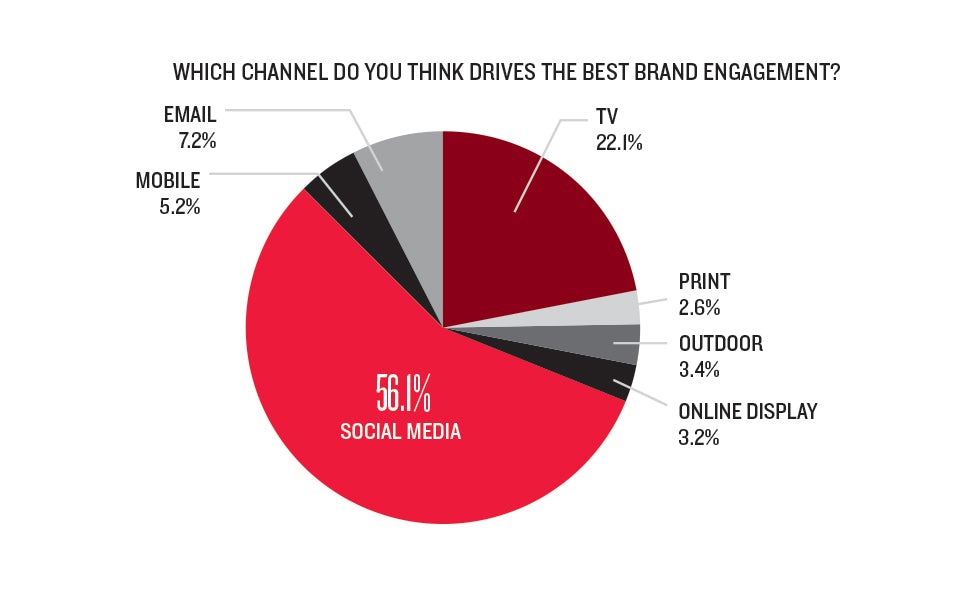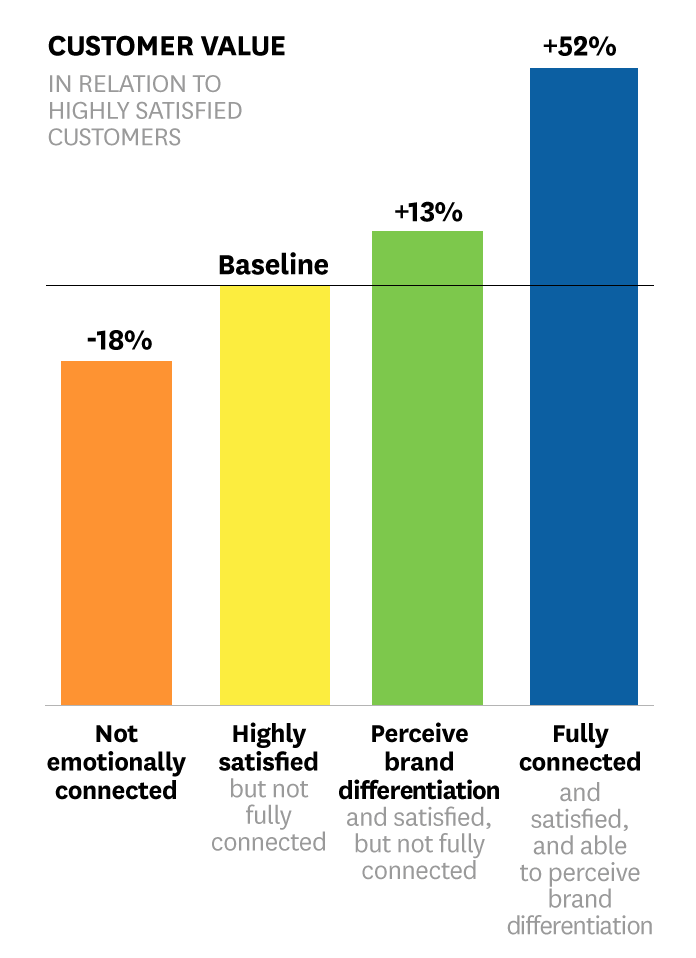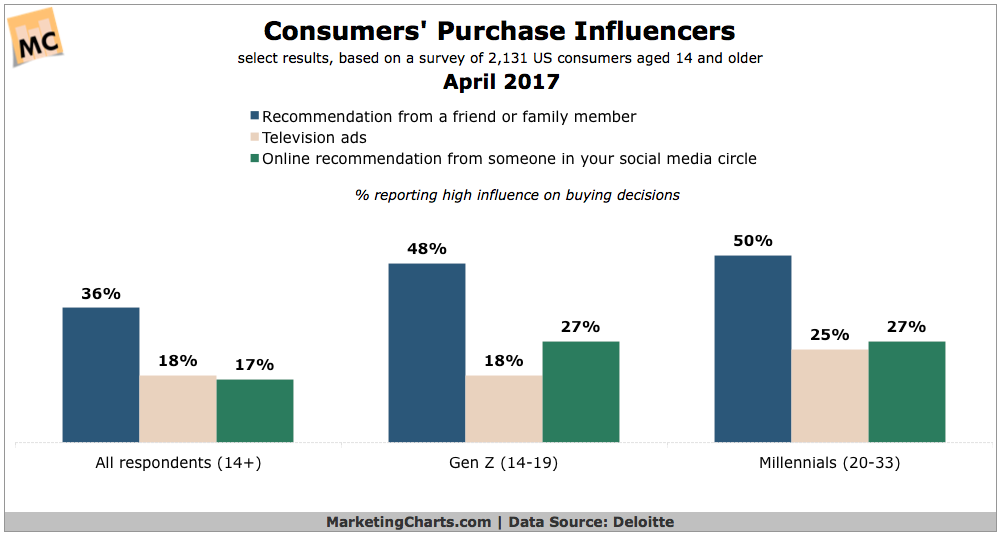
The Untold Love Story Between Brand Engagement and Earned Media Marketing
Love is creating a connection that runs deeper than small talk, finding someone or something that believes in you and that you believe in.
It's finding the peanut butter to your jelly.
The love story of the 21st century isn’t a heartbreaking Romeo and Juliet-style tale, though. It’s the sweet, unfaltering relationship between something every person comes into contact with, every single day.
In the digital age, where people are constantly attached to their phones and electronic devices, the biggest love story lies at the crux of this, at the point where the consumer meets and creates a connection with the brand of their dreams.
Let’s slow down for a second…
In a survey conducted by Marketing Week, 78% of marketers said they use brand engagement as an ROI metric.

But what exactly is brand engagement?
For most CMOs, brand engagement defines a consumer’s emotional commitment to a brand. It starts with brand awareness and goes deeper - a bit like the dating stage turns into a full-blown relationship when you get to know someone and realize you have tons in common.
It refers to loyalty and word-of-mouth marketing, but today it’s also inextricably intertwined with social media.
Being able to interact with brands and build relationships in new ways - via a 140 character Tweet or a shout out on Facebook - has given new meaning to brand engagement for consumers.
In the past, the general public rarely had any interaction with the brands they bought from, bar the odd television commercial or billboard. Today, they can open up conversations with them, and build relationships in ways that never used to be possible.

In the Marketing Weekly survey, 83.7% of marketers defined “a positive mention on social media” as a key indicator in brand engagement, while a further 81.9% considered a retweet or social media share from a consumer a big thumbs up in the brand engagement stakes.
And for most marketers, social media is the most popular place for brand engagement to unfold, providing the perfect backdrop for brands and consumers to get to know each other in an intimate way (bar the candlelight and cosy meal for two).

In the Fjord Trends 2017 report, the team hit the nail on the head with brand engagement. In the past couple of years, a huge emphasis has been placed on customer co-creation - or as the report puts it, "less story-telling and more story-doing".
Brands are no longer the primary owners of their stories, and are instead allowing customers to have a stake in it. Co-creating with their communities has seen brands pushing their consumers to center stage rather than simply letting them be guests on the show.
Why Marketers Struggle With Brand Engagement
Though many marketers see the value in brand engagement, there's ultimately a sticking point when it comes to implementing and measuring it.
Get social media news like this in your inbox daily. Subscribe to Social Media Today:
There's still a huge number of marketers using traditional forms of marketing, despite the fact that tactics like ads, commercials, and billboards don’t allow for a dialogue between brand and consumer.
These are static, one-sided forms of marketing - and no one wants a selfish partner in a relationship.
Even more marketers fail to realize that emotions play a much more significant role in consumer purchase behavior than things like price and convenience.
To encourage and garner authentic brand engagement requires a certain level of emotional investment - just like any blossoming relationship.

It also takes time to woo customers.
According to research, it takes between six and eight touches with a brandfor someone to hit the “buy” button, which means it’s more important than ever for brands to nurture relationships in the places where their consumers are hanging out – mostly, social media.
But even then, when the engagement is happening, it’s difficult to measure.
How does a like translate to a sale? What counts as a “decent” level of engagement?
The thing marketers are struggling with is the fact that engagement is an ongoing fluid encounter that requires work and perseverance.
A 'like' might not translate as a measurable sale, but that 'like' might lead to a retweet, or the liker telling their friends about your business.
And, in an age where word-of-mouth marketing is still one of the most valuable forms of marketing (albeit digitally), the relationships brands build with consumers is often more valuable than the sale itself.
But, let’s say for a moment that brands can measure engagement in a tangible way.
Let’s say they have access to data and analytics from their engagement campaigns.
What then?
Authentic Love = Authentic Content
Picture the early stages of love.

You crave a connection with the object of desire and you’re ready and willing to bare your soul to them. Craving that connection is something that all humans go through, and it translates into the marketing world as well.
According to an SAP report, a huge 90% of people trust other people more than brand messages.
We’re now living in a time where the “truth” can easily be accessed via a quick Google search or a scroll through social media. Today, only 18% of consumers trust business leaders to be truthful - but being truthful isn’t what makes content authentic.
There are three key drivers if we’re looking at what separates “authentic” content and “inauthentic” content:
- Depth
- Context
- Emotion
Marketers now have access to hundreds of different platforms and can easily create content with the click of a button.
Brands are publishing blogs, videos, and ebooks, we’re attempting to engage our audiences with bitesize pieces of content on Snapchat and Instagram, but at the bottom of it all, their aim is to do just one thing: create a connection with the people who buy from them.
Creating content for the sake of creating content just doesn’t work - instead, an effective strategy for brand engagement is to focus on the three drivers above. By going deep, creating contextual content, and injecting a hearty dose of emotion into the proceedings, you’re sharing stories that matter the most to your brand’s fans.
Think about it this way - the brand experience begins for consumers the moment they type in a search on Google to fulfill a need or to solve a problem.
When they’re ready to click buy, they’ve already gone through 80% of the sales funnel, and now they’re just looking for the right brand to buy from.
Guess which brands are still on that list? It’s the ones with content that resonates with the consumer; it’s the ones that tell a story that the consumer wants to be a part of; it’s the ones that make the consumer feel a certain kind of emotion.
It’s quite a move from the pushy marketing of the past.

In fact, only 1% of millennials claim that a compelling advertisementinfluences them.
So what kind of content hits all three drivers of authentic content?
The Rise of Earned Media Marketing
A recent Forbes article states that “62% of millennials say that if a brand engages with them on social networks, they're more likely to become a loyal customer”. So, not only do consumers expect brands to be on social networks, but they expect them to engage them, too.
Social media has created this kind of feedback loop, which has led to a more transparent marketing landscape.

People know more because they have access to more media, which makes them less trusting of previously polished marketing messages sent out by brands.
They aren’t fooled by the suited and booted exterior of a brand, and instead want to get to know them - kind of like how, when we meet someone, we want to get to know them via every means possible – we ask their friends and family for funny stories about them and we scour their social media to get a glimpse into their past.
But that also means it's become harder for brands to influence consumers - not because they can’t be influenced, but because there are too many different forms of media coming at them from all different angles, which is constantly affecting their opinions.
This is why earned media has become the go-to for many brands, especially when it comes to creating and maintaining brand engagement.
What is Earned Media?
Essentially, earned media is any content created by consumers about your brand. It can include things like:
- Customer reviews
- Social media shoutouts
- Images and blog posts about your brand
Because this content is created by other consumers, potential buyers see it as more authentic, but it also helps to create a story around a brand that hasn’t been buffed into oblivion by the marketing department. And, because the content is created by other consumers, it’s relatable and opens up a space for communication and engagement.
The Success of Earned Media Content on Brand Engagement
Applebee’s #Fantographer Campaign
Applebee tapped into something a lot of social media users love to do – take pictures of their food. With their #Fantographer campaign, they invited consumers to share pictures of their dinners.

As you can imagine, thousands of people jumped on board (779,000 photos have tagged on Instagram), but a lot of these weren’t useable for future campaigns. Either the quality of the images was low or the content just wasn’t what Applebees had hoped for.
In response to this, they came up with a side campaign that taught users how to take great photos of their food. Hardcore Instagram fans jumped at the opportunity to make their photos stand out and, in just three months, images marked with the #Fantographer hashtag appeared in 78 million Twitter timelines. On Instagram, engagement increased by 25%, showing that just a little help from a brand can make an earned media campaign go from good to incredible.
Shinola’s #MyShinola Campaign
High-end watch retailer Shinola saw an opening for earned media and ran with it for their #MyShinola campaign.

As soon as someone had purchased a timepiece online or in-store, the brand invited them to share a picture right away, tagging it with #MyShinola.
For every image shared, the photographer is given full credit, which has allowed Shinola to open up personal dialogues and, therefore, personal relationships with each and every customer that has shared a piece of content.
By implementing the campaign, Shinola has seen an increase in their visual post frequency, as well as a boost in engagement on their Facebook page.
Georgia State University’s #GSUnited Campaign
Before implementing their #GSUnited campaign, Georgia State University’s social media presence was scattered at best. Different departments weren’t working together to provide the best experience for students, and digital customer service suffered.
As part of the campaign, the university set up unified campaigns and events, like 'Homecoming', which brought together all colleges, campuses, departments, and students under the same hashtag.
Students now share selfies and content under the hashtag, with the social media team bringing it together to share it all in one place and keep school spirit high.

As a result, the campaign received a 216% increase in engagement than the previous year’s social media efforts and garnered 3x the normal weekly engagement for the university.
Earned Media and Brand Engagement are a Match Made in Heaven
As you can see, earned media and brand engagement go together like peanut butter and jelly. The love story of the century isn’t a flash-in-the-pan celebrity and their latest beau, but instead is an open and honest dialogue between brands and their consumers.
Humans are constantly looking for connections with other humans - whether that’s in life, love, or business - and tapping into that baseline instinct is how brands are creating more and more loyal followers.
By generating consumer-created content that's deep, meaningful, and relatable, brands are able to reach potential buyers where they're hanging out, and create conversations with them that matter.
Instead of adding to the noise, they're actively nurturing relationships and giving consumers the chance to drive the connection in the way that suits them best. This ultimately leads to a more switched-on customer base and a boost in brand engagement.